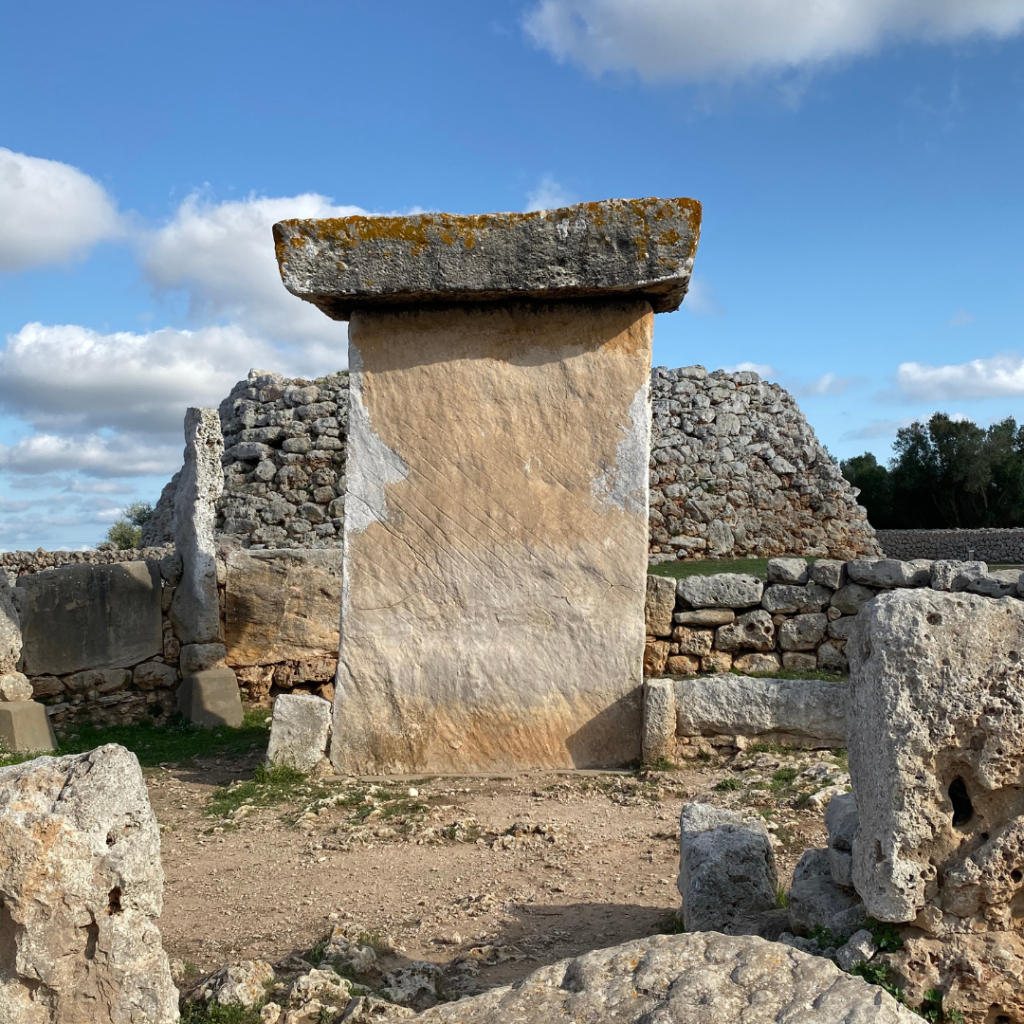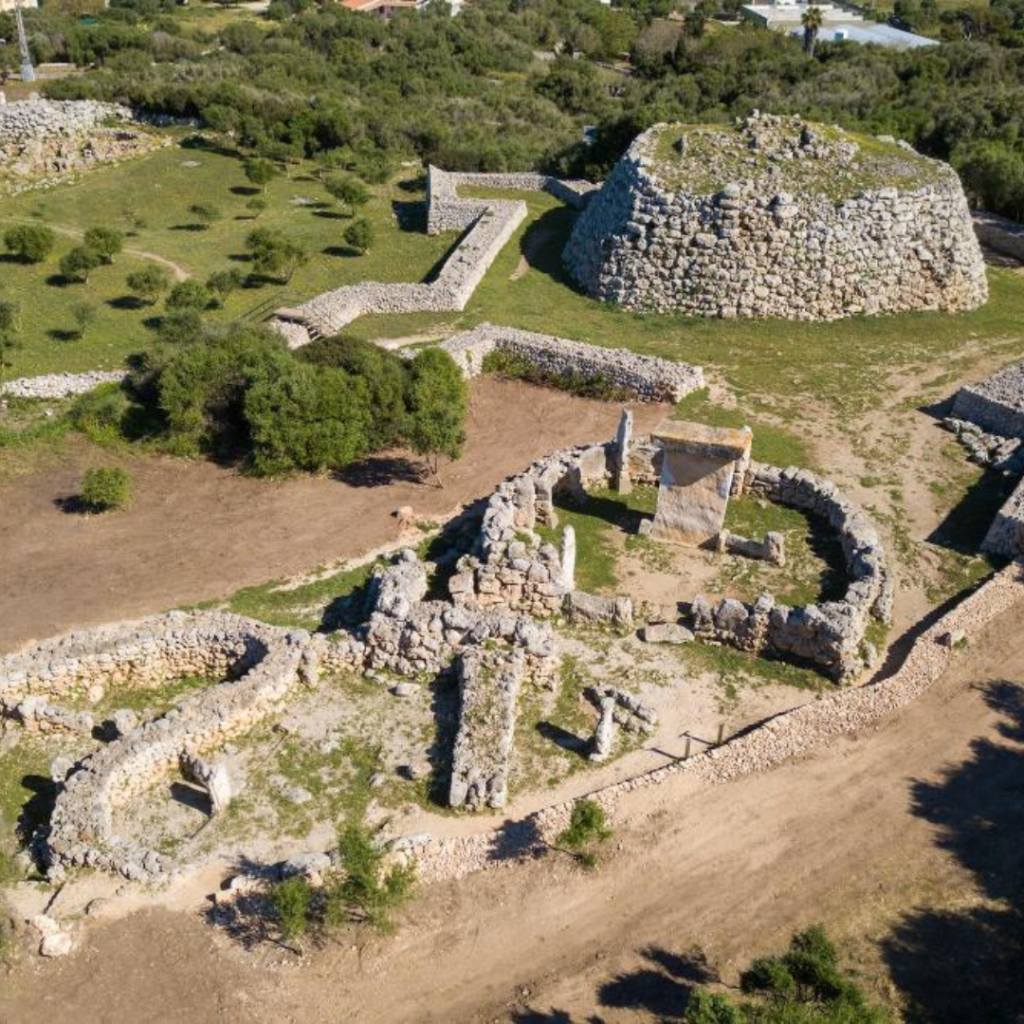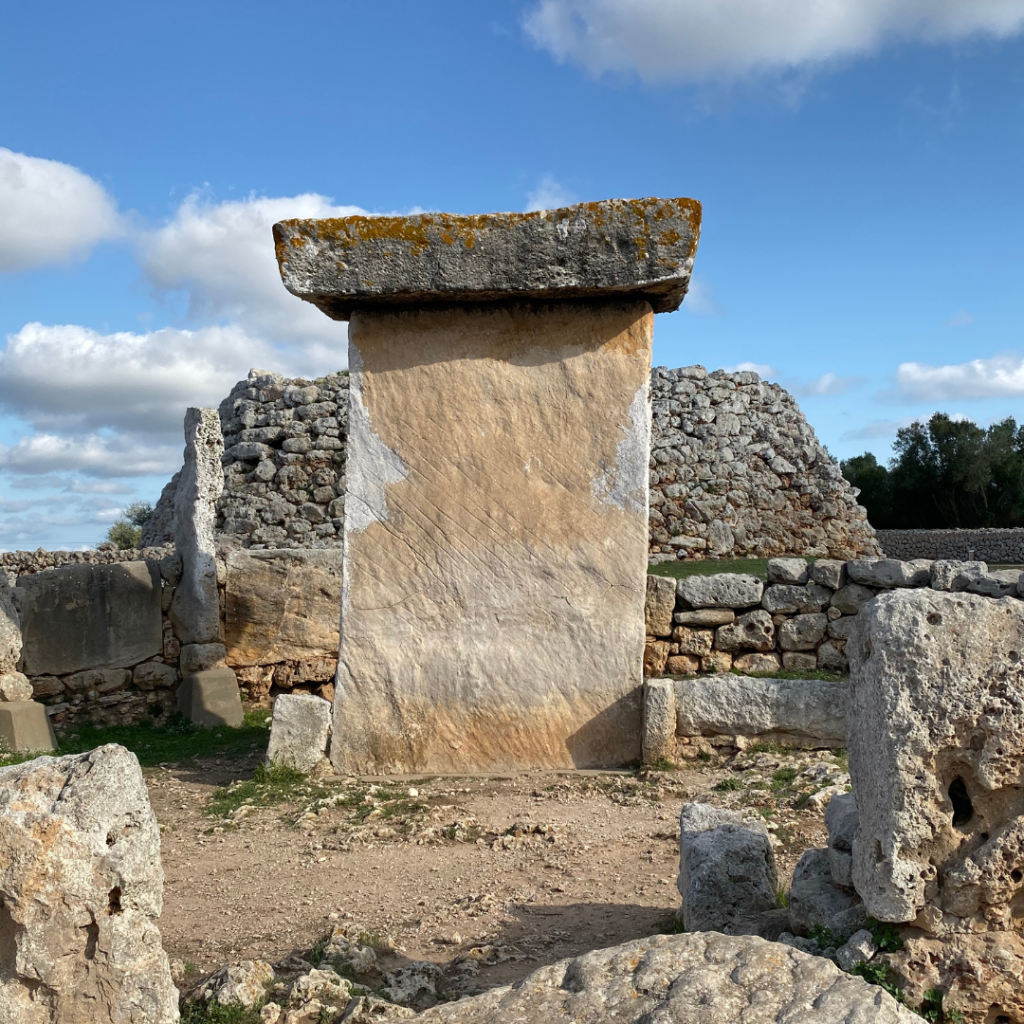In our serene island of Menorca, in the heart of the Mediterranean Sea, lies the fascinating Talayotic Settlement of Trepucó, a living testament to the rich history of the Balearic Islands. This archaeological site, dating back to the Bronze and Iron Ages, offers a glimpse into the prehistoric past of the region and has captured the imagination of those seeking to understand the roots of civilization in the western Mediterranean. Undoubtedly a must-visit for anyone setting foot on the island.

The Talayotic Settlement of Trepucó, one of Menorca’s largest settlements spanning over 4 hectares, stands as a tangible testament to the prehistory of the Balearic Islands. It is located right in the middle of three municipalities: Mahón, Sant Lluís, and Es Castell. While currently only a fraction of this ancient enclave remains, its remnants tell stories of abrupt destruction, sudden abandonment, and remarkable archaeological discoveries.
The current landscape of Trepucó includes stretches of walls with square towers, two talayots, the taula enclosure, and traces of dwellings. At the heart of the settlement, an imposing talayot and a taula, the latter excavated in 1930 by Margaret Murray, stand in a setting of historical significance.

During the Second Punic War, Trepucó suffered abrupt destruction, leaving behind a unique opportunity for archaeologists. Excavations revealed remarkably well-preserved domestic tools, now displayed in the Museum of Menorca, offering a detailed insight into the daily life of the civilization that inhabited these millennia-old lands.
The star-shaped fortification surrounding the largest talayot and the taula has its own story, built in the 18th century by Spanish troops besieging the castle of San Felipe. Although more recent, this defensive structure adds layers of complexity to Trepucó’s narrative.
Inside the enclosure, documented in recent excavations, four talayots were found, although only two have withstood the test of time. The first, located in the center of the fortification, displays a circular structure with a possible central column, while the second, to the northwest, is distinguished by an ascending internal corridor.

To the south of the large talayot, the taula enclosure reveals a horseshoe-shaped construction with a nearly five-meter-high taula, a prehistoric masterpiece that has withstood the centuries. It served as the setting for ancestral rituals to gain the favor of fate and the gods. Modern interventions, such as concrete reinforcement in the 1930s, have preserved this archaeological marvel.
In 2010, new excavations south of the taula enclosure unearthed additional structures, including three talayotic houses and a gallery that served as a linteled door in prehistoric times. These findings, along with previous discoveries, complete the mosaic of life in Trepucó over the millennia.

As we explore the historical richness of Trepucó, it is essential to remember that Menorca’s recent designation as a UNESCO World Heritage Site underscores the importance of sites like this, reinforcing the global commitment to preserve and understand humanity’s rich cultural heritage.
With the UNESCO distinction, it is expected that attention and care for these sites will increase, promoting archaeological research and responsible tourism, ensuring that future generations can also marvel at the fascinating history of Trepucó and its significance in Menorca’s historical tapestry.
To visit this Talayotic settlement, simply follow the signs on the road from Mahón cemetery that lead there. A plot at the entrance, converted into a parking lot, will allow you to safely leave your vehicle and embark on a completely free visit that can range from 60 to 90 minutes.
We hope you enjoy the visit!
